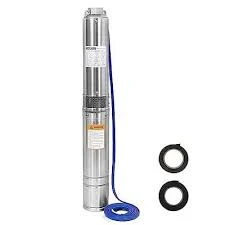9 月 . 29, 2024 08:26 Back to list
Troubleshooting Reasons for Submersible Water Pump Not Delivering Water
Troubleshooting a Submersible Water Pump That Is Not Pumping Water
Submersible water pumps are essential tools for various applications, from draining flooded basements to providing water for irrigation systems. However, there may be times when a submersible pump fails to function properly, leaving users frustrated and seeking solutions. Understanding the common reasons why a submersible water pump might not be pumping water is crucial for troubleshooting and restoring its functionality.
1. Power Supply Issues
The first step in troubleshooting a non-pumping submersible water pump is to check its power supply. Ensure that the pump is connected to a functioning electrical outlet. If the pump is hardwired, consider checking the circuit breaker or fuse. A tripped breaker or blown fuse could be the reason the pump is not operating. Additionally, it’s important to inspect the pump’s power cord for any visible damage, as frayed wires can interrupt the current.
2. Motor Problems
If the power supply is intact yet the pump still won’t start, the issue may lie within the motor. Submersible pumps rely on electric motors, which can fail due to overheating, manufacturing defects, or wear and tear. If the motor runs but does not pump water, it may be obstructed internally or damaged. Listening for unusual noises can also provide clues; a grinding or rattling sound often indicates mechanical issues requiring professional repair.
3. Clogged Intake or Impeller
A common reason for a submersible pump not pumping water is clogging in the intake or impeller. Debris, such as dirt, sand, or small rocks, can block the pump’s intake screen, preventing water from entering. Regular maintenance, including cleaning the intake and removing any visible debris, can prevent clogging. If the impeller is jammed, disassembly may be necessary to clear obstructions. Always reference the manufacturer's instructions when attempting repairs.
4. Low Water Levels
submersible water pump not pumping water

Sometimes, the reason a submersible pump isn't pumping is simply due to low water levels. Many pumps are designed with automatic shut-off features to prevent running when the water level falls below a certain threshold. If the water is too shallow, the pump may not activate. Checking the water levels or adjusting the pump’s float switch (if equipped) can resolve this issue.
5. Valve Malfunctions
Check for any valves that might be closed or malfunctioning. If a check valve is stuck or closed, it can prevent water from flowing through the system. Ensure all valves in the system, including gate valves and check valves, are open and functioning properly.
6. Airlock Issues
An airlock can occur in submersible pumps, especially if they are new or have been recently serviced. This happens when air becomes trapped in the discharge line, preventing water from flowing. To resolve an airlock, manually vent the discharge line by loosening fittings until water starts to flow freely.
7. Installation Problems
Improper installation can lead to several operational issues. Ensure that the pump is installed at the correct depth and orientation. If the pump is installed too close to the bottom of the pit or basin, it may not function efficiently, leading to potential overheating or clogging.
Conclusion
If your submersible water pump is not pumping water, first check the power supply, motor functionality, and for any clogs in the intake or impeller. Ensure sufficient water levels and properly functioning valves. Addressing these common issues can often resolve the problem without the need for professional assistance. However, if troubleshooting does not yield results, seeking help from a qualified technician may be necessary to diagnose and repair underlying issues. With the right approach, you can ensure your submersible water pump operates efficiently and effectively, meeting your water management needs.
-
Your Guide to Deep Well Pumps
NewsOct.31,2024
-
Why Choose a Stainless Steel Deep Well Pump?
NewsOct.31,2024
-
Understanding Water-Filled Submersible Pumps
NewsOct.31,2024
-
Understanding SS Submersible Pumps
NewsOct.31,2024
-
Reliable Submersible Well Pumps for Your Water Supply Needs
NewsOct.31,2024
-
Choosing the Right Submersible Pump for Your Water Management Needs
NewsOct.31,2024
-
 Understanding Water-Filled Submersible PumpsWhen it comes to selecting the right pump for your water management needs, understanding the different types available is crucial.Detail
Understanding Water-Filled Submersible PumpsWhen it comes to selecting the right pump for your water management needs, understanding the different types available is crucial.Detail -
 Guide to Installing a Deep Well Submersible PumpWhen dealing with deep wells, a deep well submersible pump is often the most effective solution for extracting water from significant depths.Detail
Guide to Installing a Deep Well Submersible PumpWhen dealing with deep wells, a deep well submersible pump is often the most effective solution for extracting water from significant depths.Detail -
 Finding the Right Submersible PumpWhen seeking an efficient solution for pumping water from deep wells, sumps, or other applications, the submersible pump is a leading choice.Detail
Finding the Right Submersible PumpWhen seeking an efficient solution for pumping water from deep wells, sumps, or other applications, the submersible pump is a leading choice.Detail
